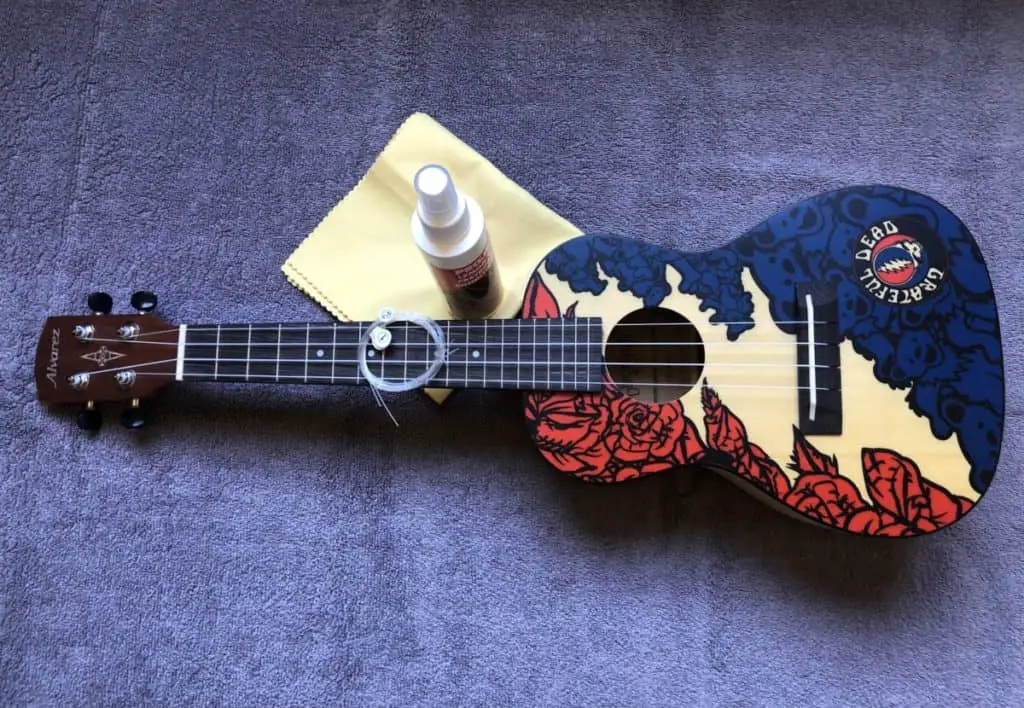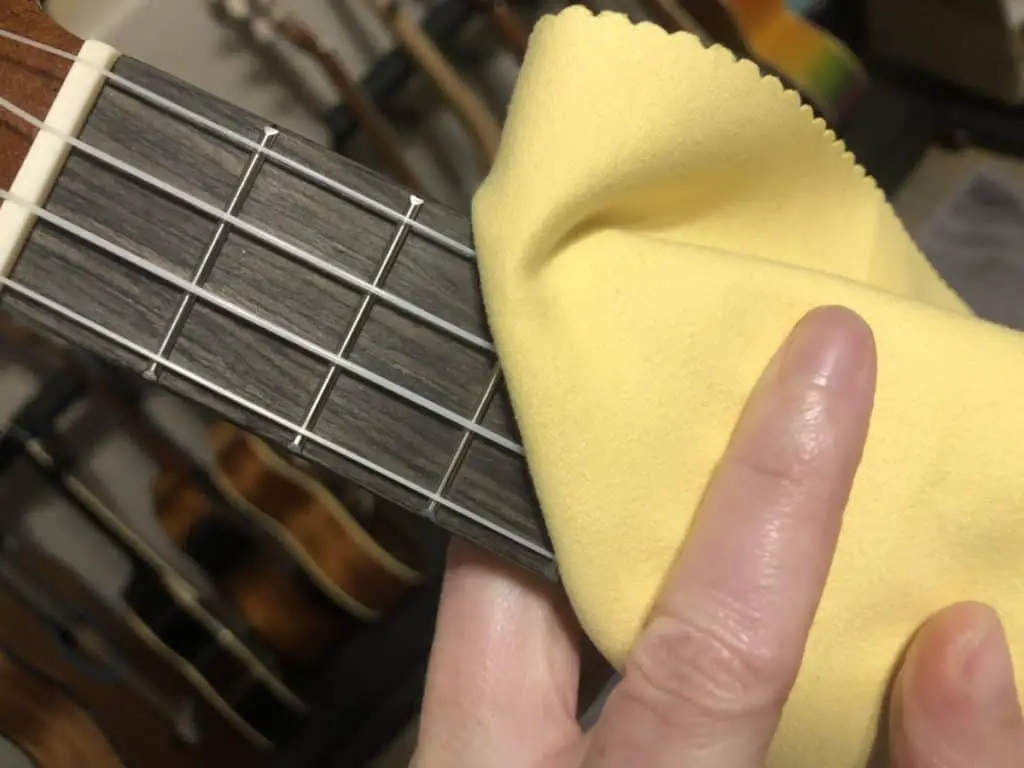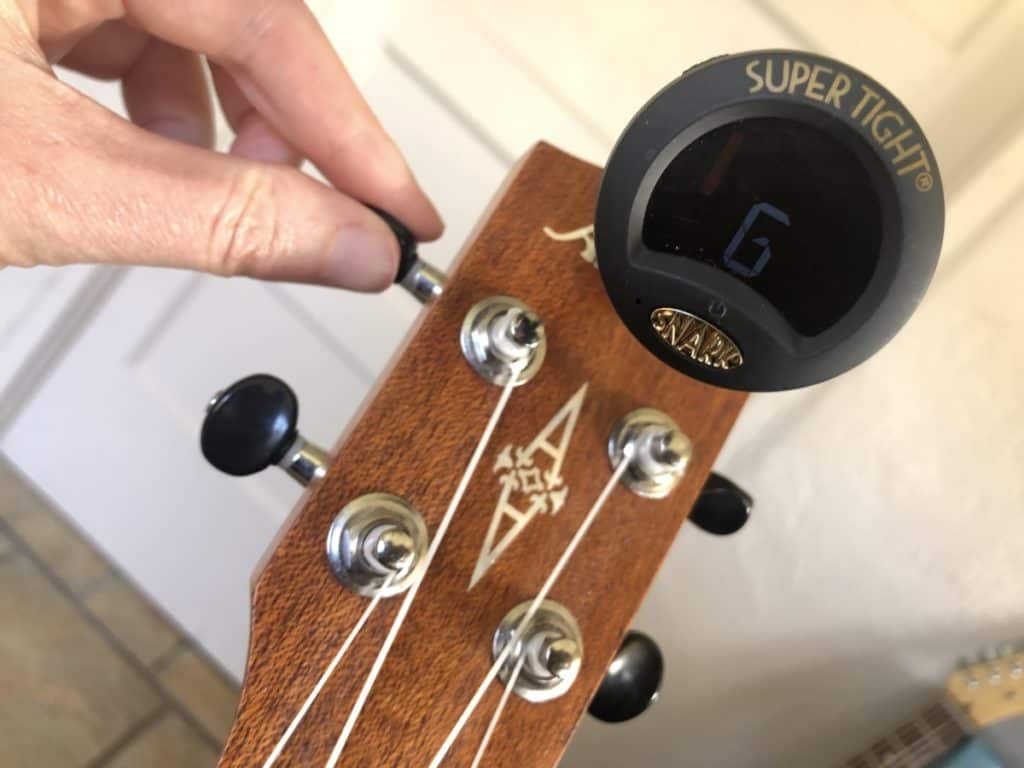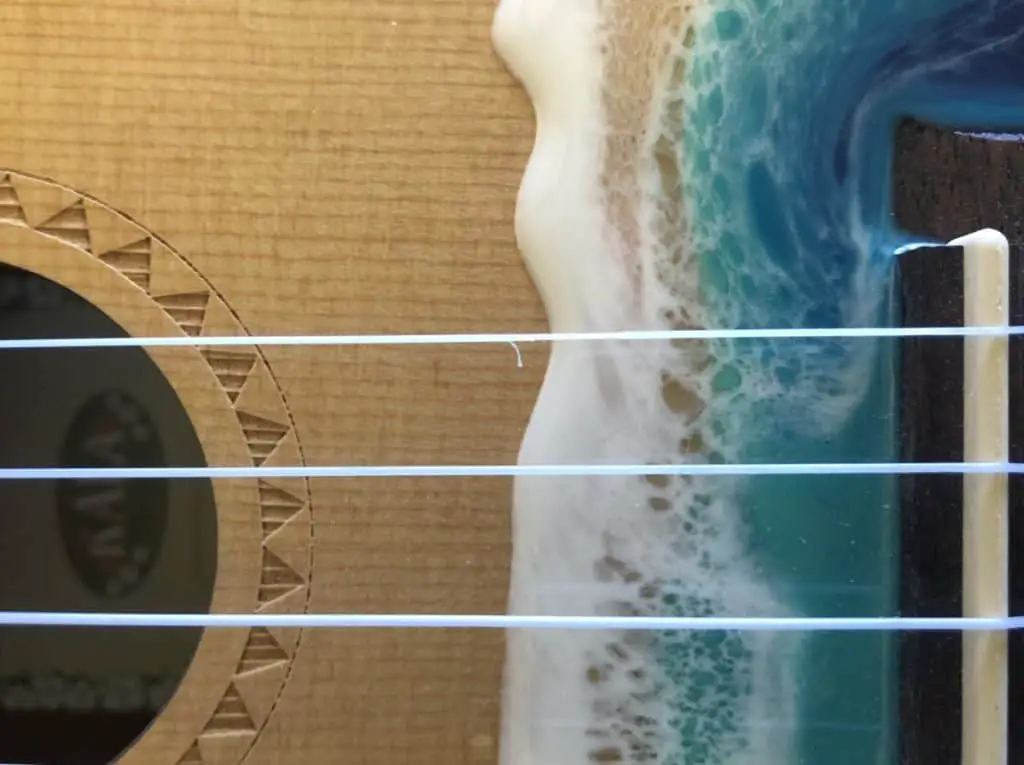Today I’m going to explain some guidelines for how often to change your ukulele strings (plus the signs to watch out for).
My favorite ukulele recently seemed like it lost its magic. Its voice felt less bright and “alive” and keeping it tuned became a struggle. One string change later and it’s better than ever!
Strings are not meant to last forever. But how do you know when it’s time to retire them?
Let’s jump right into answering this all-too-common question.
How Often to Change Ukulele Strings
To sound their best, ukulele strings should be changed every 6 to 12 months for sporadic players, every 1 to 3 months for daily and heavy players, and every few weeks for professional players. A drop in sound quality, loss of tuning stability, and physical damage are all signs that a string change is needed.

A number of different things can impact how often you’ll need to change your ukulele strings and they vary from player to player.
Take a look at the factors below and determine which ones are most relevant to you to get an idea of how often you’ll need to change your strings.
1. Playing Frequency
Ukulele players exist at every level. Some people keep ukuleles mostly for wall décor while others, like Jake Shimabukuro, go on tour and shred regularly.
The more you play your ukulele, the more often you’ll need to change the strings. There’s no hard and fast rule for exactly how often this is and there is definitely some personal preference involved, but the guidelines below should point you in the right direction.
If you are an average player (that is, you play for a half hour or so a few times a week or sporadically), you’ll be okay changing your strings every 6 to 12 months.
If you play frequently (an hour or more per day most days), you should change your strings every 1 to 3 months.
If you play at a professional level, expect to change your strings every few weeks. Some players even change their strings after every gig so they always sound their best.
If you only play once in a while, strings can last for years on a ukulele!
Note: These guidelines assume you want to get the absolute best sound out of your strings. But they are only guidelines. If you like how they sound, keep on playing them!
2. Playing Style
Everyone naturally develops their own playing style on the ukulele. Some people are heavy-handed and like to strum vigorously while others delicately finger pluck the strings.
If you are a heavy strummer, expect to change your strings more often – at least every 1 to 3 months.
If you have a lighter touch and play predominantly finger style, you don’t have to change your strings as often and can get away with changing them every 6 to 12 months. Of course, you may still want to change them more often to ensure you are getting the best tone.
The manner in which you strike the strings also impacts string life. Most people play ukuleles with the pads of their fingers and thumb. This is gentler on the strings and they will last longer.
Clawhammer style involves striking the strings with the back of your fingernails and will degrade the strings faster. You’ll have to change your strings more often if you clawhammer frequently.
By far the most destructive method of playing ukulele strings is the use of a nylon guitar pick. While this is less common (and considered sacrilegious by some uke connoisseurs), it drastically shortens the life of the strings.
If you love the sound of a guitar pick, expect to change your strings monthly. You can also use a plectrum specifically designed for ukes. These are typically made of felt, wool, or rubber and are far easier on the strings.
3. Type of Strings
Ukulele strings are most commonly strung with different blends of plastic. Plastic strings last a lot longer than metal guitar strings and are more resistant to moisture and other environmental factors responsible for shortening string life.
There is, however, a slight variation in lifespan among the most common synthetic blends used to make ukulele strings.
Fluorocarbon strings last the longest by far, with some players even keeping their strings on for years. Physically, they are the strongest material and are therefore the most resistant to physical wear.
Nylgut also lasts quite a while physically, although players report a loss of tone and a “brittle” sound after the 8 month to one year mark when played regularly.
Nylon as a material has a lifespan of many years. Expect to change nylon strings more often than that, though, as the stretching and physical damage from tuning and playing will degrade them faster than other materials.
If you play a baritone ukulele or use low G tuning, you’ll have to also consider wound strings. These strings feature a nylon core but are wrapped with metallic compounds.
The natural grooves on wound strings trap dirt and oils from your fingers more easily and the metallic components are also more susceptible to corrosion. As a result, they wear out much faster.
Expect to change wound strings far more often than standard ukulele strings. Frequent players may even change them every 3 weeks! But every 1 to 2 months is more common.
4. Personal Preferences
As you play your ukulele, you will fine tune you ear and develop your own preferences for everything from string type to tone.
Often, beginners can’t “hear” when their strings have declined as it is such a gradual process. More experienced players can tell right away, and will therefore end up changing their strings more frequently to recapture that new string sound.
And believe it or not, some people actually prefer the sound of old strings! Many clawhammer players relish this more mellow, plunky sound.
It ultimately comes down to what you like! And there are no rules for that.
5. Chemistry of Your Hands
This is an odd one, but we are all a little different when it comes to our body chemistry. And ukulele strings spend a lot of time in contact with our hands.
Substances like oil, acids, and sweat will transfer onto the strings, degrading them over time. Dirt, soap, lotion, bug spray, sunscreen, and that cotton candy you just ate will also end up on your strings.
Wound strings are particularly susceptible, as the natural grooves will trap these substances and degrade them faster.
It’s always a good idea to wash your hands before playing whenever possible. Also, wipe the strings and fretboard with a microfiber cloth after playing to remove as many of these substances as you can. Taking these easy steps will extend the life of your strings.

When to Replace Ukulele Strings (4 Signs)
Your ukulele will give you a few warning signs that its strings are on the way out. Be on the lookout for these 4 things:
Sign 1: Drop in Sound Quality
As you play, you may notice that your strings have lost their vigor. While new strings sound bright and vibrant, older strings will sound muted, dull, and “dead.” Old strings will also lack sustain and not ring out as well and will be less responsive.
A lot of this is personal preference. If your strings no longer sound good to YOU, it is time to change them!
Sign 2: Loss of Tuning Stability

Old strings will have stretched to their maximum and will not stay in tune as well. Much like you did when the strings were new, you will find yourself spending a lot of your time tuning and retuning.
Broken-in strings in their prime generally hold their tuning well, so if you begin to notice your strings going out of tune more often it is time for a string change.
Sign 3: Physical Damage

When you play, you are repeatedly pushing the soft ukulele strings against the hard metal fret wires and fretboard. Tuning continually also stretches the strings. After a while, physical wear begins to show.
Checking the strings for nicks, rough spots, cloudiness, grooves, and discoloration is the easiest way to determine if it’s time for a string change. Slide your finger along the underside of each string and feel for notches and rough spots.
Strings may age at different rates, but if you notice one starting to go bad it’s a good idea to change them all. Also be on the lookout for corrosion and unraveling on wound strings.
Sign 4: Broken String

If you’ve failed to notice any of the warning signs described in 1 through 3, a broken string will serve as an obvious symptom of expired strings.
Ukulele strings are pretty tough, but once a nick forms and stretches enough it will eventually give way under the tension of tuning and playing.
If one string breaks, it’s most likely time to change them all.
Can You Re-Use Ukulele Strings?
As long as the strings are in good condition and are the correct length, ukulele strings can be safely re-used.
Swapping strings works best when they are newer. If you aren’t sure, look for the 4 signs listed above to assess string health.
Make sure you are transferring strings to a ukulele of the same size (for example, if the strings were on a soprano ukulele, move them to another soprano).
A string set that sounds lackluster on one uke may come to life on another instrument. String swapping is a great way to experiment with different types and brands of strings!
